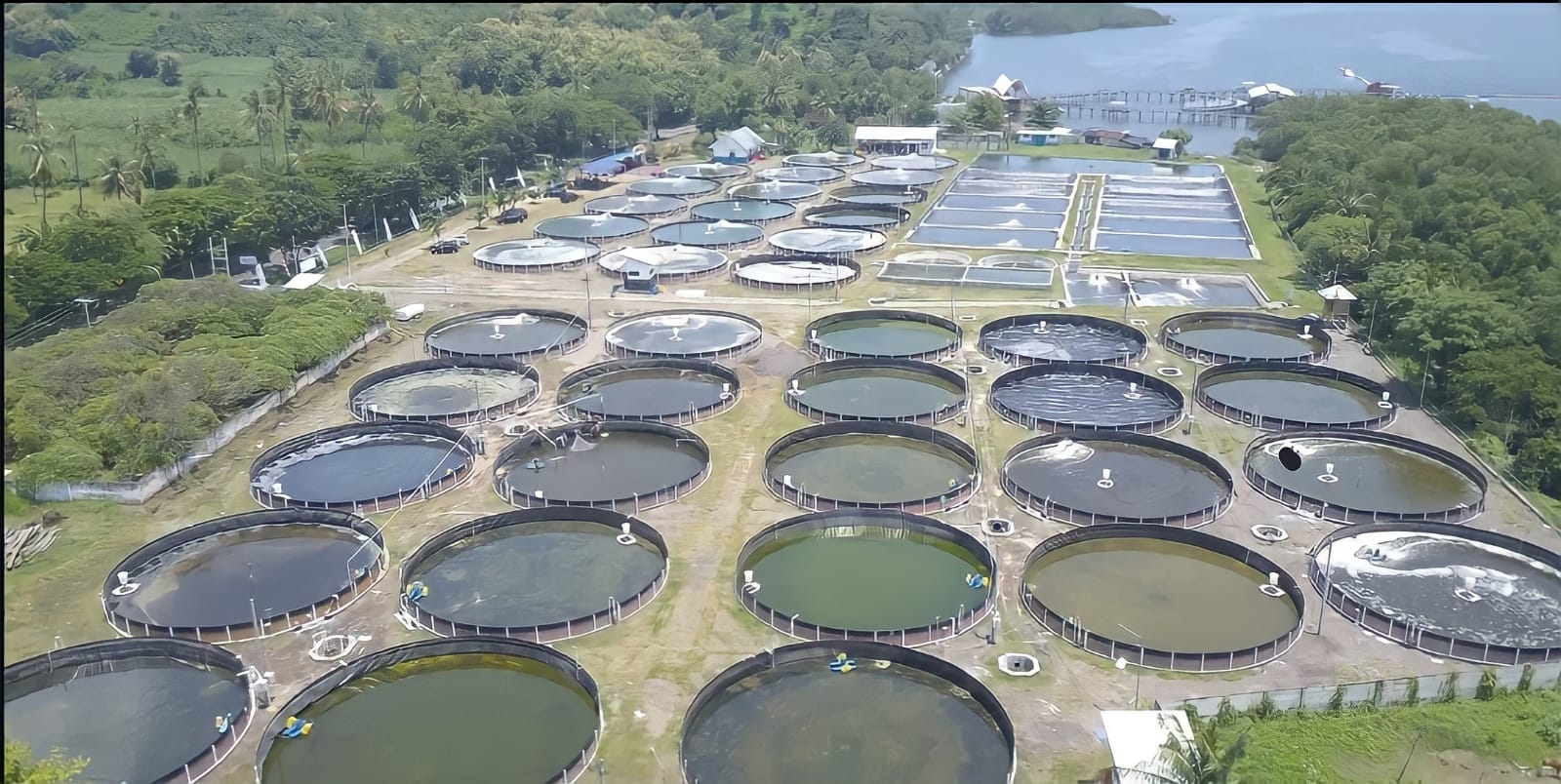An increasing number of local small-scale farmers and entrepreneurs in Indonesia have started to use circular shrimp ponds.
The government has been positive towards this as it has backed this new direction taken by the shrimp farmers. The shrimp farming industry has seen different farming models come out in the last decade as more and more farmers have entered the sector.
Small ponds have been popular because some farmers do not have the capital or land to construct larger ponds. In Madura, East Java, farmers started this trend of small ponds (1,000 m2 or less) as they created rectangular ponds with bamboo and tarpaulin.
The circular design has a diameter of 5 to 30 meters. Private companies and the government are developing small-sized ponds for small-scale farmers as the ponds are more accessible as they do not require a lot of money or land.
Chair of the Indonesian Young Shrimp Farmers, Rizky Darmawan, has been constructing circular ponds since 2019 in West Nusa Tenggara. The inspiration for this new direction came from Erwin Budiman (Current chair of Shrimp Club Indonesia), who has used circular ponds since 2016 in Medan, North Sumatra. The circular pond design can be challenging and labor-intensive for some farmers as they will have to focus on 10-20 units in one hectare of land compared to 2-4 units if they use rectangular ponds.
However, there is a significant advantage, the harm from a disease outbreak can be reduced as the ponds will be divided into numerous sections, which will keep them relatively safe. Rizky researched and used several different approaches to determine the most efficient or optimal system for his farms.
Rizky used the following techniques to increase the efficiency of his circular ponds:
1. Used the circular ponds for trailing as this helped him easily shift
young shrimps into larger ponds for them to grow out.
2. Deployed different production methods to find out the best method
that was optimal for his farm.
3. The circular shape allowed water to go through the central drain
quickly, so water circulation was much more efficient. The small
pond design also adapted to the Recirculating Aquaculture System
(RAS) easily.
4. Stocking shrimp with a density of 150 PL (post-larvae)/ m2. He set
the production target at 1.3 tonnes per pond in the 90s. This is
equivalent to 41 tonnes per hectare.
5. He started with simple equipment instead of starting with the newest
machinery. He used the latest technology once his farm system was
optimal.
6. Changed the water every day, maintained a dissolved oxygen level,
tried different methods and techniques to get the best results.
7. Used Pro feeder auto-feeders (which are also used for larger ponds). By using these feeders, he was able to get an average feed conversion ratio of below 1.2.
Indonesia is one of the largest shrimps producers globally, which means the local market is competitive, and farmers are always looking to find new innovative ways to increase the production rate of their farms. Rizky predicts that circular ponds will gain popularity in Indonesia as farmers and members from the PMI have started developing these ponds. The Central Protenia Prima (CCP) has partnered up with local shrimp farmers to help set up circular pond designs as some local or new farmers lack resources such as money and land.
Please let us know what you think about circular ponds by joining the ShrimpStar Community forum. Simply click the link https://community.shrimpstar.com/ and login with your details.
